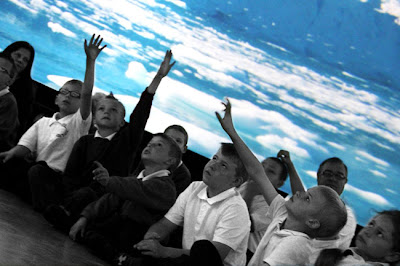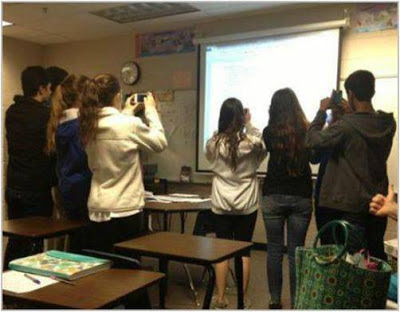When finally the war ended, and the Allied forces departed, the islanders were left with an interruption to their new found wealth. They attempted to regain this wealth by creating replicas of many of the iconic technologies their visitors had used. For example, they created landing strips and aircraft from straw or made wireless radios from coconuts. One could perhaps imagine them today carving a mobile phone out of wood. They attempted from their collective memories to fashion their society into the image of their technologically advanced visitors. Some staged marches and parade drills using sticks to represent rifles, and painted military style insignia on their bodies to make them look like soldiers. They tried to recreate a set of circumstances that they believed would attract the wealth back into their communities. Essentially, they fell into the trap of commodity fetishism, and an entirely new belief system grew up around it.
Oliver drew our attention to the manner in which many novice learners, and in particular undergraduate students, attempt to build into their work what they believe their lecturers require from them. This is a superficial response to learning. For example I have often heard students asking 'how many references should I include in my essay?' to which my reply is: 'include what is relevant to support your arguments and justify your choices.' Just as the Melanesian islanders failed to understand the inner workings of technology, but attempted to recreate it from its surface appearance, so undergraduate students who 'don't get it' attempt to write critical essays by stringing together references into some form of meaningful narrative. It barely scratches the surface. As Oliver pointed out, we send our students a better message if we ask them to 'inform their essays' from the literature, rather than asking them to 'reference their work'. I go farther and advise students that they need to engage with the theories and published work they incorporate into their work, rather than quoting them disjointedly. Once students get the idea that they can write critically by going deeper, actually understanding the concepts and theories rather than simply creating replicas, they will begin to assimilate these ideas successfully in to their professional practice.
Photo by Erik Wilde

Cargo cults, primitive cultures and superficial learning by Steve Wheeler is licensed under a Creative Commons Attribution-NonCommercial-ShareAlike 3.0 Unported License.







